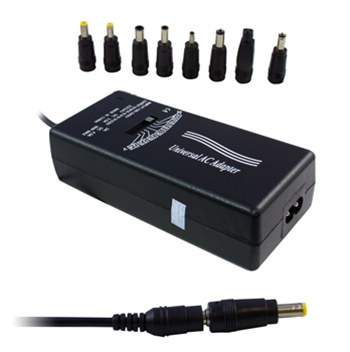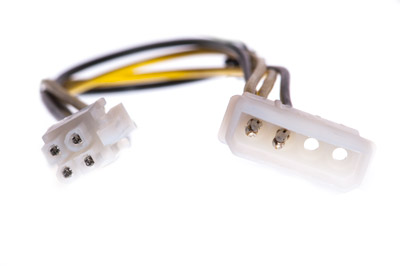| Wir bemühen uns, unsere Website in so vielen Sprachen wie möglich zu lokalisieren, doch diese Seite wird zur Zeit maschinell per Google Translate übersetzt. | schliessen |
-
-
Produkte
-
Ressourcen
-
Support
-
Unternehmen
-
-
Startseite
-
Ressourcen
- Blog
- Laptop BefestigungsladeproblemeFixing Laptop Charging Issues
Laptop BefestigungsladeproblemeFixing Laptop Charging Issues
Von Steve Horton Oktober 16, 2013charge, charging, laptop, powerKeine KommentareNichts ist für Internet-Junkies angenehmer als das Surfen im Internet. Aber wenn ihr Laptop nicht hochfährt, könnte ihr Vergnügen leicht zu Schmerzen werden. Keine Panik, manchmal sind Probleme mit der Stromversorgung ebenso wichtig wie das Zurücksetzen des BIOS. Leider könnte es sich lösen, als würde man sich buchstäblich nach einer Nadel im Heuhaufen umsehen!
Für Benutzer von Windows XP, 7 und 8 kann die Behebung eines Stromversorgungsproblems variieren, aber die Protokolle für jede Software sind im Wesentlichen identisch. Nichtsdestoweniger ist der beste Weg, Ihr Problem einzugrenzen, indem Sie die einfachsten Probleme aus der Gleichung entfernen. Der AC-Adapter und die Steckdosen Ihres Laptops sollten als erstes überprüft werden. Analysieren Sie Ihr Stromkabel auf Schäden wie freiliegende Drähte und Crimps. Wenn kein Schaden vorliegt, trennen Sie den Netzadapter, setzen Sie das Netzkabel wieder ein und schalten Sie es ein. Wenn die Stromanzeige-LED Ihres Netzadapters nicht aufleuchtet, benötigen Sie möglicherweise ein anderes Kabel.

Ein typischer Power-Baustein für einen Laptop mit einer Vielzahl von Anschlüssen.Eine andere Technik zum Ermitteln von Energieproblemen besteht darin, einen Hard-Reset durchzuführen. Wenn sich Ihr Laptop immer noch nicht einschalten lässt, trennen Sie die externen Geräte, einschließlich des Netzteils und der Batterie. Halten Sie dann den Netzschalter für 10 bis 15 Sekunden gedrückt, um die Stromversorgung und die Standardeinstellungen zurückzusetzen. Wenn Ihr Laptop über eine nicht austauschbare Batterie verfügt, führen Sie einen erzwungenen Reset durch, und schließen Sie den Netzadapter erneut an. Als nächstes schalten Sie den Laptop ein und beobachten Sie die LED-Anzeigeleuchten der Tastatur und achten Sie darauf, dass die Komponenten hochfahren. Offensichtlich haben Sie Ihren Computer erfolgreich wiederhergestellt, wenn er normal hochgefahren wird.
Wenn die Stromanzeige-LED an Ihrem Netzgerät aufleuchtet, aber nicht eingeschaltet bleibt, liegt möglicherweise ein Stromausfall vor. Wenn der AC-Adapter mit dem Laptop verbunden wird, oder an verbogenen / kaputten Pins, kann es zu Engpässen kommen. Wenn Sie Beschädigungen an Ihren Kabelpins feststellen, benötigen Sie möglicherweise einen anderen AC-Adapter. Wenn der Schaden am Stecker Ihres Laptops liegt, benötigen Sie möglicherweise ein anderes Netzteil. Wenn keines der besprochenen Protokolle vorhanden ist, umfassen andere Ideen das Neuformatieren, Überprüfen von Fehlermeldungen und Programme von Drittanbietern.

Ein typischer interner Stromanschluss für einen PC.Eine weitere Möglichkeit zur Fehlersuche besteht darin, die Batterielebensdauer und den Verschleißprozentsatz eines Laptops zu testen. Obwohl es sich kompliziert anhört, ist der Prozentsatz des Lebens und der Abnutzung einfach ein Kalibrierungstest, der bestimmt, ob Laptops ein echtes (tatsächliches) oder falsches (falsches) Batterieproblem haben. Laien ist dieser Test ein Barometer (Messung) der Ladung (Energie), die Ihre Laptop-Batterie unterhält.
Der Test auf Lebensdauer und Verschleiß hängt davon ab, ob Ihr kritischer Alarm aktiviert ist. Der kritische Alarm ist der Piepton, der Sie warnt, wenn der Akku fast leer ist. Es funktioniert in Verbindung mit dem Windows Battery Giter, dem Akku-Power-Display auf Ihrem Desktop. Beachten Sie bei der Fehlersuche die Lebensdauer und den Verschleißprozentsatz:
- Wenn der Laptop einen ungewöhnlichen Leistungspegel anzeigt
- Wenn die Batterie (Geizhals) sehr niedrige Leistungspegel anzeigt
- Wenn der kritische Alarm nicht ertönt (Piepton), wenn die Batterieleistung sehr niedrig ist
- Wenn alle oben genannten trotz eines normalen Funktionslaptops auftreten
Im Allgemeinen, wenn Laptops trotz niedriger Batterieprozente richtig funktionieren, ist das Problem oft ein softwarebezogenes Problem im ACPI. Die ACPI- oder Advance Configuration- und Power-Schnittstelle überwacht die Energieeinstellungen Ihres Laptops, indem Schnittstellen mit Software wie Windows Battery Giter, Programmen von Drittanbietern und dem BIOS (Basic Input / Output System) hergestellt werden, das den Batterieprozentsatz tatsächlich überprüft.
Der ACPI-Kalibrierungstest erfordert Zugriff auf die Energieverwaltung innerhalb der Systemeinstellungen. Im Power – Management, geben Sie die Powersave – Funktion nichts zu tun , wenn Ebene, um kritisch zu erreichen , die Batterie zu entwässern so automatisch Ihr Laptop heruntergefahren. Lassen Sie den Akku vor dem erneuten Einschalten des Laptops auf 100% aufladen. Wenn Ihr Laptop nach dem erneuten Einschalten nicht ordnungsgemäß funktioniert, versuchen Sie eine Neukalibrierung.
Wenn der ACPI- und der Akku-Geizschalter extrem niedrige Leistungswerte anzeigen, erzwingen kritische Alarme in der Regel, dass Laptops in den Ruhezustand versetzt werden. Wenn Ihr ACPI defekt ist, könnte Ihre Batterie ungewöhnliche Leistungsanteile anzeigen. Wenn dies der Fall ist, wird Ihr BIOS wahrscheinlich nicht die Lebensdauer Ihrer Batterie überprüfen. Wenn also die Kalibrierung kein fehlerhaftes ACPI ermittelt, liegt möglicherweise ein Fehler im BIOS Ihres Laptops vor.
Obwohl das ACPI zur Lösung von Stromversorgungsproblemen geeignet ist, besteht die Alternative darin, Ihren kritischen Alarm zu deaktivieren, um den Akku ordnungsgemäß zu testen. Dies erreichen Sie, indem Sie die Systemsteuerung öffnen und auf das Sound- Symbol klicken. Klicken Sie im Menü Sound auf Programm, und Sie sehen die Liste der kritischen Akku-Alarme . Klicken Sie auf Kritischer Alarm und fahren Sie mit dem unteren Rand des Fensters fort, in dem Sounds angezeigt werden . Klicken Sie auf das Menü Sounds , das eine umfangreiche Liste von Optionen öffnet. Klicken Sie oben in diesem Menü auf ” Keine”. Es wird schließlich im Fenster ” Sounds” angezeigt. Klicken Sie dann auf die Schaltfläche Übernehmen in der unteren rechten Ecke, die den Sound – Fenster schließt.
Die Behebung von Stromversorgungsproblemen durch das ACPI kann zu Datenverlusten führen, da der Batterie-Geizhals deaktiviert werden muss. Dies bedeutet, dass die Stromanzeige Ihres Akkus wahrscheinlich nicht angezeigt wird. Schließlich, wenn Ihr Laptop reparierbar ist, sind die Chancen, dass eine der Lösungen, die wir besprochen haben, Ihr Dilemma lösen wird.
Was this post helpful?YesNoKostenlos Treiber-Updates
Aktualisieren Sie Ihre Treiber in weniger als 2 Minuten, um besser zu genießen PC-Leistung - Kostenlos.
Kostenlos Treiber-Updates
Aktualisieren Sie Ihre Treiber in weniger als 2 Minuten, um besser zu genießen
PC-Leistung - Kostenlos.
Haben Sie Ihre Antwort nicht finden?Stellen Sie eine Frage zu unserer Gemeinschaft von Experten aus der ganzen Welt und eine Antwort in kürzester Zeit erhalten.most relevant aktuelle Artikel Unternehmen| Partner| EULA| Rechtlicher Hinweis| Meine Informationen nicht verkaufen/teilen| Meine Cookies verwaltenCopyright © 2026 Corel Corporation. Alle Rechte vorbehalten. Nutzungsbedingungen | Privatsphäre | CookiesPin es auf Pinterest
-